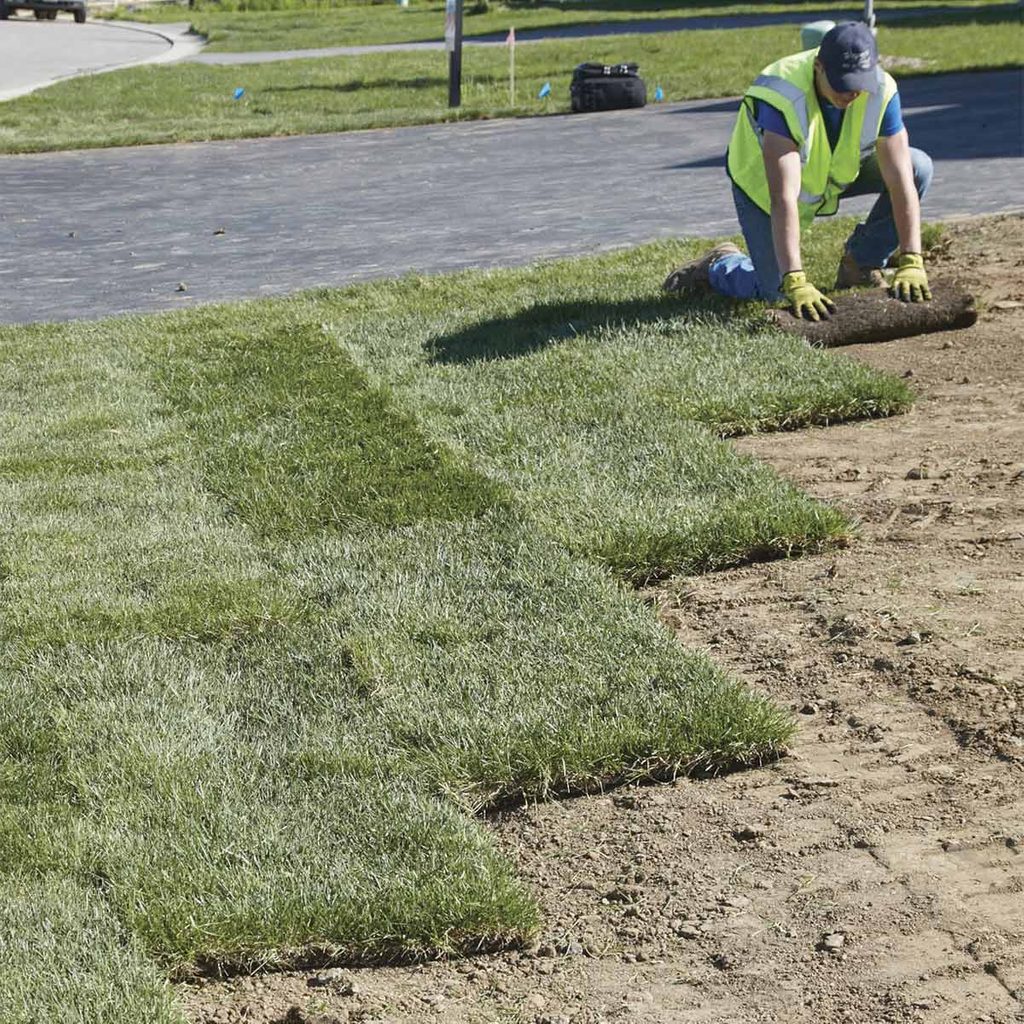Sod vs. Seed: How to Choose the Right Option for a Lush Lawn
Updated: May 18, 2023

Both approaches have their pros and cons.
If one look at your front yard has you wanting to disappear behind a clump of weeds growing there, it might be time to give your lawn a makeover. I’m not talking about a little landscaping here and there; I mean starting over with new grass. The first question to ask yourself in that situation is whether to go with sod or use grass seed. There are pros and cons for both approaches, so here’s an overview to help you make that decision.
Remember, with either route, you’ll need to follow a regular lawn care schedule throughout the year, with a few extra steps while the new grass establishes itself.
On This Page
What Is Sod?
Also know as turf, sod is a patch of live grass with its roots in a thin layer of soil beneath it. Most sod is grown in wide-open fields and harvested in small squares or rectangles that are rolled out onto the ground to be planted.
There are different types of sod, using different types of grass. Because it’s grass, there are warm season and cool season varieties made to grow well in specific areas. There are also different kinds of sod for different light conditions, depending on whether your yard gets full sun, partial shade or lots of shade.
What Are the Advantages of Sod?
One thing that homeowners like about sod is that it creates an instant lawn. Just unroll it, and within two or three weeks, it will usually have established itself.
Sod is also edge when it comes to controlling weeds or erosion. It’s harder for grass seed to grow in areas where there are a lot of weeds, because it has a more difficult time establishing itself. Seed can also get brushed away in high traffic areas of your yard or washed away in the rain or spots like under the drain spouts.
Once sod is established, there’s no denying that it looks great. It gives your lawn a nice, even look. It’s the same kind of grass growing all over the yard and, if you’re taking care of it, the lovely shade of green can really add major curb appeal.
What Are the Drawbacks of Sod?
For starters, it’s expensive. Though the prices can vary from place to place, but the sod itself can cost as much as 85 cents per square foot. If you paying for professionals to install it, the price can nearly double.
Though it seems easy to sod your own lawn, there is more to it than just unrolling it and waiting. If you don’t do it correctly, there’ll be dead spots and seam lines in your yard.
And don’t forget that there’s a long to-do list to prepare for sod installation. You’ll have to know what kind of soil you’re working with to determine whether or not it will need to be amended before laying sod. The area where the sod will go has to be scraped clear, removing all existing plant life. Then, you have to grade the site, till, rake, and sometimes add extra topsoil.
Laying sod is not a simple DIY project.
What Are the Advantage of Grass Seed?
Grass seed costs less than sod, a lot less. Depending on what type of grass seed you’re using, it can cost anywhere from four to 20 cents per square foot. If the grass seed you sow don’t take off, you’re not taking nearly as big of a loss compared to laying the sod wrong.
Using grass seed to start a lawn is a much easier DIY project. You don’t have to worry about seams between the sod patches or laying it down in a short window, since grass seed can be stored. However, planting grass seed isn’t as simple as sowing it. You still need to prep the soil and water the grass regularly while it establishes itself. But once it’s established, seed has the best chance of survival.
Another advantage for seed is the variety. There are more choices for seed versus sod. And because there’s more variety, you have more choices to correspond with different parts of your yard. So, if half of your yard is shady and the other half gets sun for six hours in the afternoon, it’s much easier to get the right mix for the two spots.
What Are the Disadvantages of Grass Seed?
Time is a big one. It’s going to take a lot longer for the grass seed to start growing and get established. Plus, there’s some ongoing maintenance involved in getting it to the place, like regular watering, which could be a problem if you live in a dry climate.
You have to worry about erosion too. Wind and water can sweep your seed away if you don’t take the proper precautions. Competition with weeds is another issue you’ll have to contend with.
Seed vs. Sod, Which Is Better?
There really is no right or wrong answer. The first things to consider is probably your budget, how much you can spend on laying down a new lawn. The time commitment of sod versus grass seed is another consideration to take into account.
Don’t forget to factor in your yard too. If there are multiple areas with different sunlight and shade levels, that could mean seed is the better option. But if you’re looking to take care of a sunny front yard, sod may be the way to go.
Another consideration to make is just how much of your yard you’re looking to address. If it’s just a matter of patching a few places, seed is all you need. If you’re goal is to make your existing grass thicker, not replace it wholesale, then you’re best option is to go what’s called overseeding your lawn.
Whatever you choose, sod or seed, remember, there’s no quick fix either way. The long-term lushness of your lawn is going to require ongoing care and maintenance.
